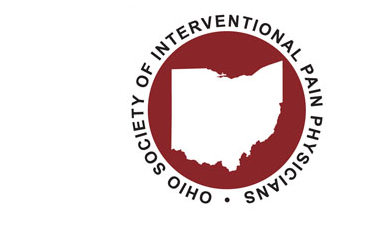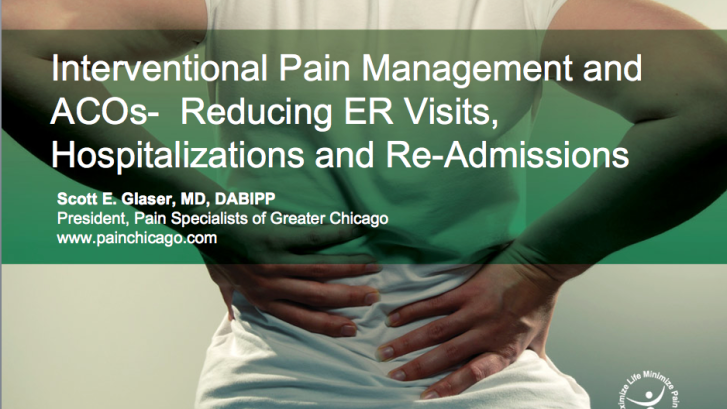DR. Glaser – ASAC Physician Focus
https://content.yudu.com/web/42umd/0A42ume/Autumn2017/html/index.html
https://content.yudu.com/web/42umd/0A42ume/Autumn2017/html/index.html
Click here for the Ohio Society of Interventional Pain Physicians Annual Conference Agenda for August 25th to August 27th 2017.

We would like to welcome you to an exciting new interventional pain meeting planned for Ohio in August 2017, the First Annual Meeting of the Ohio Society of Interventional Pain Physicians (OHSIPP). OHSIPP has been in existence for over 10 years and this meeting will invite participation from all the six academic pain fellowship programs in Ohio plus academic and private practice physicians from across the US. We hope to foster a collegial environment where all the academic pain fellowships can interact and share ideas with other academic and private physicians.
Lecture Topics Include
Business of Pain Medicine, Spinal Injections and Complications, Neuromodulation, Opioids, Advanced Techniques, Medical Marijuana, Practice Management, Regenerative Medicine, and Hands-on Ultrasound Workshop
https://www.regonline.com/registration/Checkin.aspx?EventID=1967722
Please click here to view our Interventional Procedure Instructions.

Learn how Pain Specialists of Greater Chicago is changing the paradigm and reducing ER visits, hospitalizations and re-admissions.

We would like to invite you to our HIPAA SECURE patient portal – a password protected web communication tool.
See the new portal at http://portal.painchicago.com
What is our Patient Portal?
On this web portal you may securely:
Request appointments
Confirm appointment
Enter or modify personal information
Communicate regarding medical questions, prescription refills, referrals and lab results
Communicate with our office staff
Pay your bill (We accept Debit Cards, Visa, Mastercard and Discover)
You have two options for logging in:
Individual Accounts
Single patients may login for themselves
Family Accounts
Adults and their family members who share one email address may access the portal through this login. This may also include two adult patients who share the same email address.
Family Login Request
NEW PATIENTS
You may start the registration process under “New Patients start here”. A new patient is someone who has not previously been seen at Pain Specialists of Greater Chicago.
ESTABLISHED PATIENTS
If you are currently a patient who has previously provided a correct email address, you can now use this portal for those portal functions listed above. For medical emergencies, please call us directly. DO NOT USE THE PORTAL FOR ANY URGENT MEDICAL PROBLEMS.

2016 ASIPP Annaul Meeting – Innovations in IPM For Success
April 15 – 17, 2016 in Dallas, Texas

McGuireWoods’ forthcoming 13th Annual Healthcare and Life Sciences Private Equity & Finance Conference will be held on Tuesday, February 23rd and Wednesday, February 24th, 2016 in Chicago, IL.
The session will be held in the Ritz-Carlton at 160 East Pearson Steet in the Water Tower Place. The session will start at 10:15 and last 45 minutes.
The presentation will be about key issues and opportunities in pain management and anesthesia. Steven Aguiar of Provident Healthcare Partners, LLC will be moderating.

According to a panel of pain management physicians and billing experts, there is plenty to be excited about in the world of pain management in the ASC setting.

Steroid Injections: Are They Worth the Risk? Amid controversy surrounding the U.S. fungal meningitis outbreak, opinions are split on how effective steroid injections are for treating chronic back pain.
Steve D’Alise, a 40-year-old financial analyst in Chicago heard about the deaths from fungal meningitis related to steroid injections for pain. But his back pain is so severe, he opted to have his steroid injections anyway.
“When it gets really bad it consumes you,” says D’Alise of the sciatica thats plagued him since 2009.
News of the fungal meningitis outbreak that has killed 12 has shone a spotlight on a lesser-known but frequently used fix for one of the most common chronic conditions in the United States: back pain. But medical experts and a large body of research call into question the efficacy of steroid injections, calling them a risky and costly treatment.
What makes this entire tragedy ironic is the poor evidence that these steroid injections would have relieved their back pain in the first place, says Fabrizio Mancini, a certified chiropractor, wellness expert, and the president of Parker University in Dallas.
Mancini points to a large body of research, including an editorial in the 2011 issue of the British Medical Journal. Epidural steroid injections have been used for more than 50 years to treat low back pain and are the most common intervention in pain clinics throughout the world, the article reads. Yet despite their widespread use, their efficacy is unclear. Of around 35 controlled studies evaluating such injections, slightly more than half show some benefit.
Patients like D’Alise have typically tried several interventions include ibuprofen, chiropractic care, physical therapy, and lifestyle changes before resorting to the injections. D’Alise says his condition makes commuting to work, riding a train, and sitting for long periods incredibly difficult. He received his last shot in 2011 but the relief only lasted for six months. He says the pain has returned to a “7” on a scale of one to 10.
D’Alise sought care from Scott Glaser, MD, an interventional pain-management specialist at the Pain Specialists of Greater Chicago. Even in the wake of the meningitis outbreak, Dr. Glaser says hes still administering some 18 steroid injections on a busy day. But now the doctor has found he must take some time to reassure his patients that the treatments are safe and worthwhile.
Most get relief from the local anesthetic which is mixed with the steroid and then the pain returns later that day, and the depot steroid starts to work in a few days, says Glaser. Typically, the maximum benefit will be obtained anywhere between 7 to 14 days.
Back Pain a Growing Epidemic
Eight in 10 people will experience back pain in their lifetime, and steroid injections have become a gold standard treatment for acute and chronic pain because they’re fast acting, non-addictive, and minimally invasive.
“Back pain is a big, big problem,” says David Maine, MD, director of the Center for Interventional Pain Medicine at Mercy Medical Center in Baltimore, Md. “It’s a difficult thing to treat. You sometimes make decisions quickly just to get meaningful relief.”
Dr. Maine says his practice typically uses steroid injections as “an intermediate treatment” when physical therapy, chiropractic therapy, and over-the-counter inflammatory medications, such as ibuprofen, are not effective. The injections are often one of the last intervention therapies before a patient considers surgery. Steroid injections are also a much safer alternative to many pills doctors might prescribe for pain, including highly addictive opioids and narcotics.
The U.S. Centers for Disease Control yesterday reported 137 cases of meningitis in 10 states with 12 deaths from the infection from methylprednisolone acetate injections.
Steroid injections can be costly. Glaser says they can cost $2,000 to $3,000 for each injection. “Our routine treatments are typically covered by insurance but it is getting more difficult in a lot of cases as the insurance companies deny or delay more and more treatment,” he explains. He added some insurance companies may pick up only 20 percent of the cost of such an injection.
Medical expenses for individuals with spine problems average $6,096 compared with $3,516 for patients without them, according to a 2008 analysis by the Journal of the American Medical Association using government data. From 1997 to 2005, the estimated expenditures among patients with spine problems increased 65 percent, the analysis said.
No Hard and Fast Rules for Treating Back Pain With Steroids
Pain specialists say the number of injections needed to stop back pain varies from patient to patient. “Some may have one or two and then they go through the natural healing process,” says Dr. Maine. “Others with chronic back pain or acute pain may get two or three over the course of eight months. There are no hard and fast rules. It just needs to be done for the right indication.”
Methylprednisolone acetate, the medication that was administered to patients who contracted fungal meningitis, is one of four types of corticosteroids for injections. A corticosteroid is an anti-inflammatory hormone that reduces swelling in muscle and soft tissues, and is also naturally produced in the body. The hormone is physiologically essential for stress and immune response, as well as metabolic functions. The steroids work by calming nerves and reducing the release of certain bio-transmitters, such as substance P and bradykinin, which decreases pain.
The relief from injections most typically lasts around six months to one year. However, many patients report they’ve been cured of back pain after receiving just one or two injections.